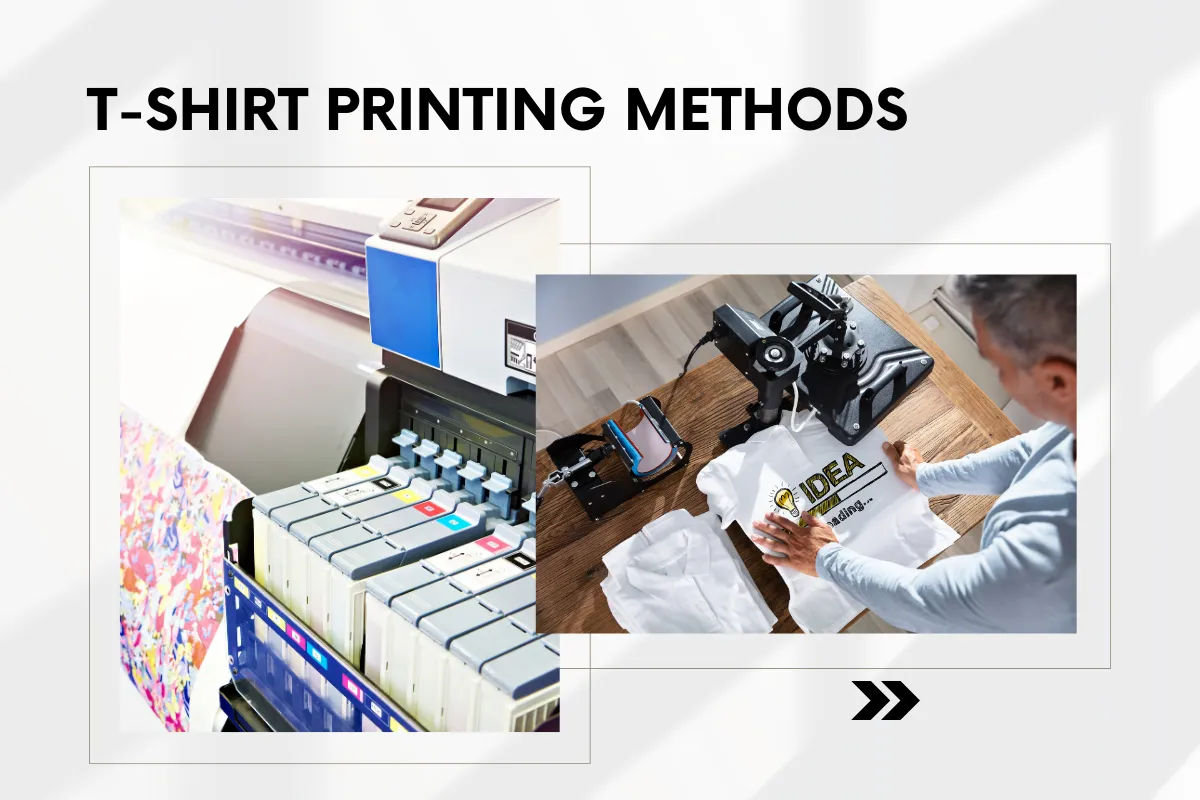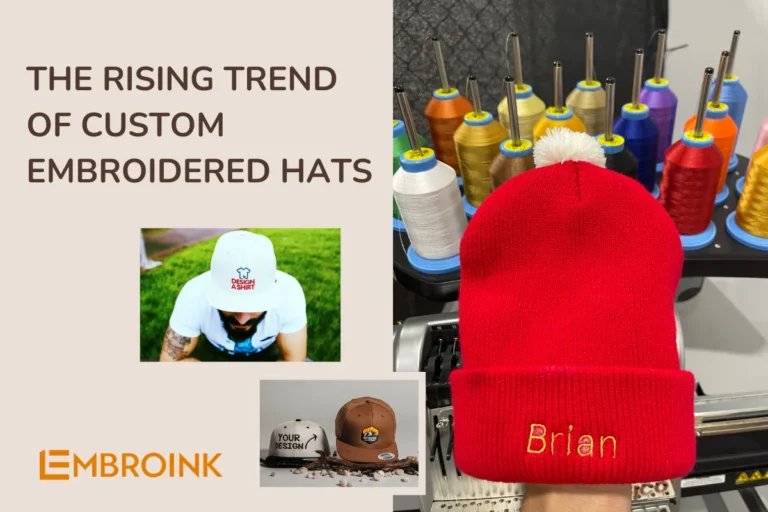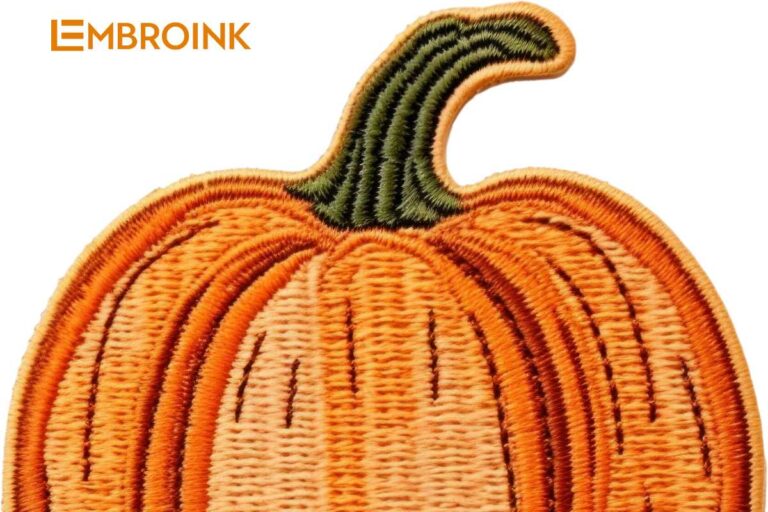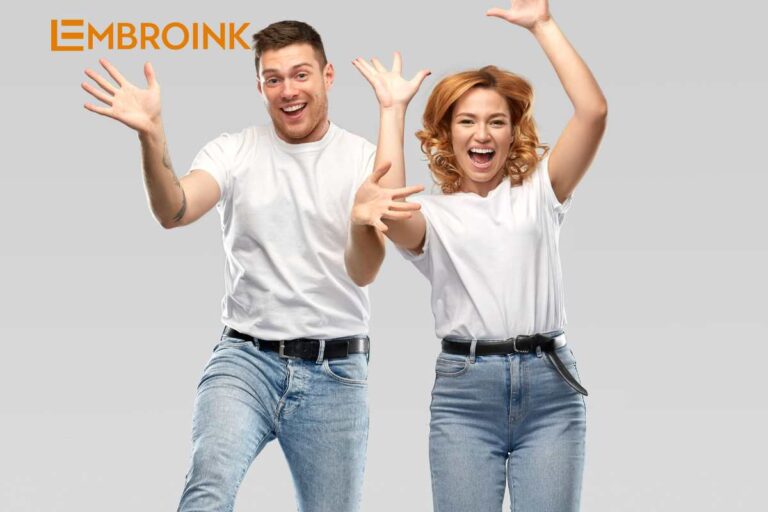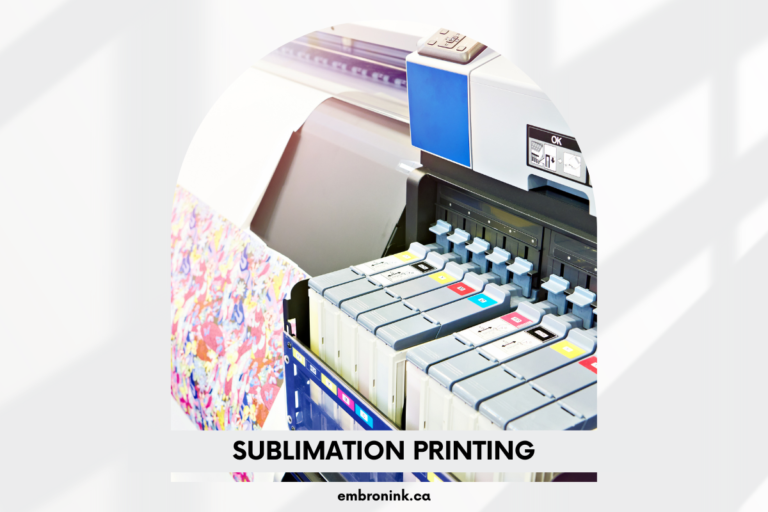Exploring various T-shirt printing methods
If you’re launching a t-shirt business or seeking ways to optimize your operations, you might be wondering, “Which t-shirt printing method is ideal for ecommerce?”. There are various methods to bring your designs to life, including direct-to-garment printing, silk screening, and airbrushing. Each technique has its own advantages and drawbacks, which can impact your production process. Key factors to consider include your design’s appearance, the fabric of your t-shirts, the volume of your print run, and your budget.
In this guide, EmbroInk‘ll explore six popular t-shirt printing techniques to help you determine the best option for your needs. We’ll also address common questions about different types of T-shirt printing.
An overview of the most common types of T-shirt printing methods
There are various methods to create t-shirts using both traditional and digital technologies. Six of the most common t-shirt printing techniques used in ecommerce are:
- Direct-to-Garment (DTG) Printing
- Screen Printing
- Dye Sublimation Printing
- Direct-To-Film (DTF)
- Plastisol Transfer Printing
- Airbrushing
DTG and Direct-To-Film (DTF) are among the most popular techniques for t-shirt printing. In the following sections, we’ll explore each of these methods in detail, explaining how they work and discussing their respective advantages and disadvantages.
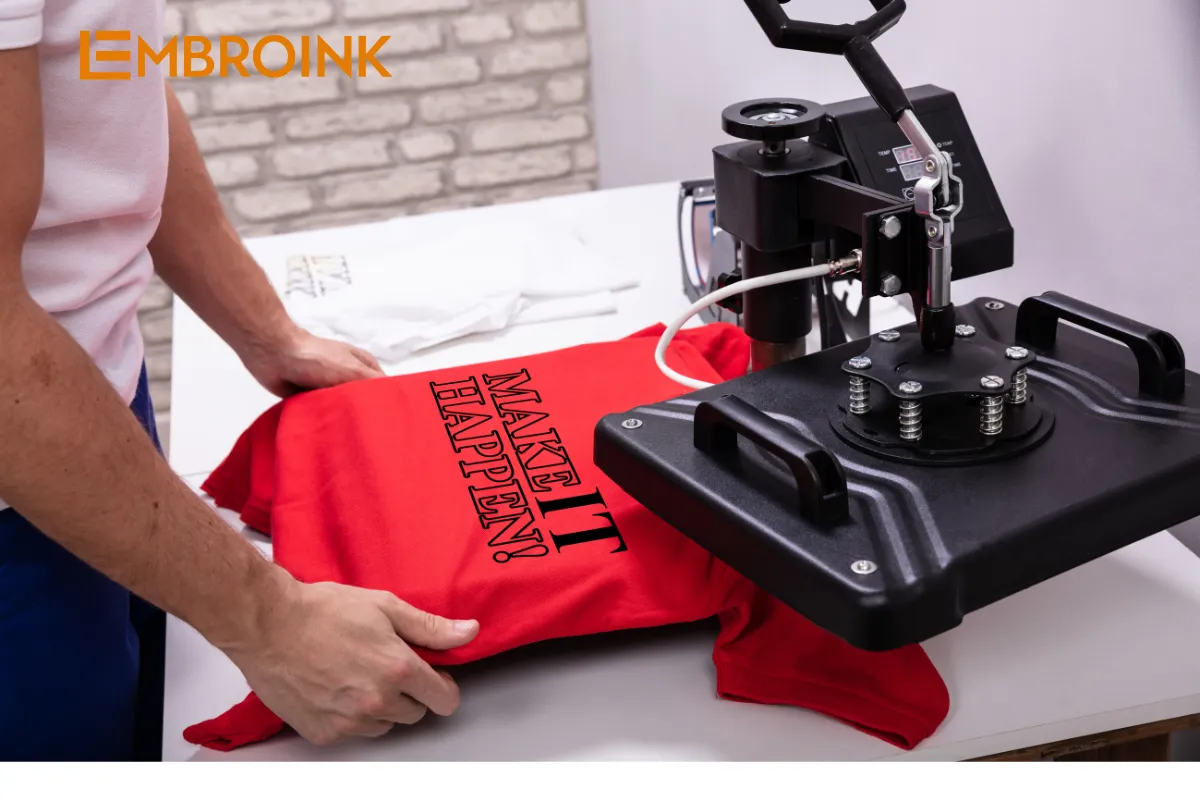
6 Types of T-shirt printing methods
Direct-to-Garment printing (DTG printing)
As the name suggests, Direct-to-Garment (DTG) printing is a technique that applies ink directly onto t-shirts, distinguishing it from methods that use screens or transfer papers. This process utilizes specialized printers and water-based inks to create high-quality prints with detailed and vibrant colors. Here’s a breakdown of how DTG printing works:
- Design creation: The t-shirt design is prepared as a digital art file and stored on a computer connected to the DTG printer.
- Shirt preparation: The t-shirt undergoes a pretreatment process with a solution that prevents white ink from discoloring the shirt, smearing, or mixing with colored inks. The shirt is then cured using a heat press or air dryer to smooth the fabric surface for optimal printing.
- Printing: The t-shirt is positioned on a flat platform called a platen and fed into the DTG printer. The printer applies the ink directly onto the shirt.
- Curing: After printing, the ink is cured using a heat press or forced air dryer to ensure it adheres well to the fabric and withstands repeated washes.
DTG printing allows for intricate designs with vibrant colors and sharp details, as it prints directly from digital files without the need for screens or stencils. It works well on various fabrics, including cotton, polyester, and blends, but achieves the best results on natural fabrics like cotton.
DTG is considered an environmentally friendly option since it uses water-based inks free from toxic chemicals and reduces waste by eliminating the need for screens or transfer papers. Although DTG printers can be expensive (often over $10,000), the method is well-suited for print-on-demand services, which help manage costs and minimize overproduction.
Pros:
- Handles complex designs with multiple colors or photographic detail.
- Inks penetrate the fabric for a smooth finish.
- Uses eco-friendly inks and materials.
- Capable of producing any quantity quickly.
Cons:
- Best results are achieved on cotton, not ideal for polyester.
- Prints may have less durability against washing and sunlight compared to screen-printed shirts.
- High initial cost of DTG printers, though working with a print-on-demand service can mitigate this expense.
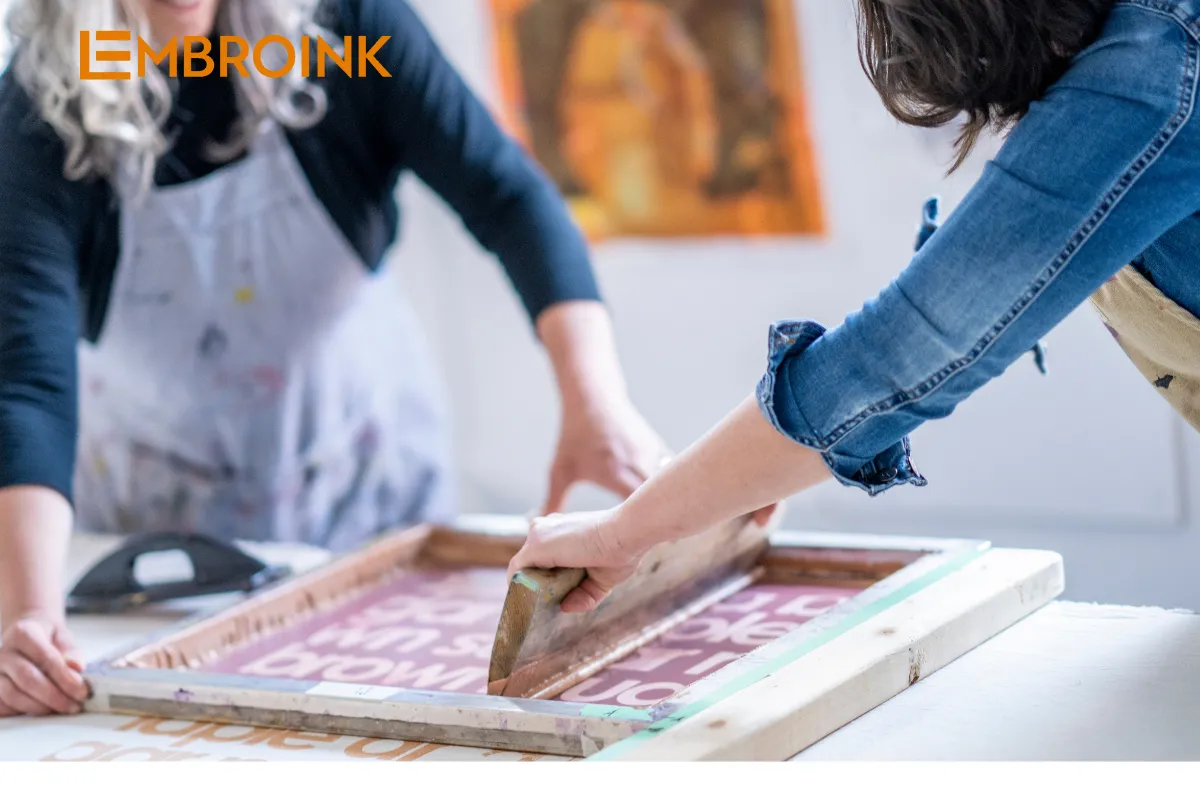
Screen printing
Screen printing, also known as silkscreen printing, is a technique where ink is pushed through a mesh screen partially blocked by a stencil to transfer designs onto shirts. As an indirect t-shirt printing method, screen printing involves several steps:
- Design creation: The design is first printed onto a transparent acetate film to serve as a stencil.
- Screen preparation: Screens are coated with a light-sensitive emulsion that hardens when exposed to light. Each color in the design requires a separate screen.
- Exposure: The screen is exposed to light, causing the emulsion to harden and create a stencil by removing the hardened emulsion.
- Printing setup: The prepared screen is set up on a printing press, and the t-shirt is placed on a printing board beneath the screen.
- Printing: The screen is lowered onto the printing board, and ink is applied to the screen and pressed through with a blade or squeegee to transfer the design onto the t-shirt.
- Curing: After printing, the ink is cured using a heat gun, heat press, flash dryer, or conveyor dryer.
For multi-color designs, separate stencils and screens are required for each color. While screen printing was historically the most popular method, its preparation time makes it less cost-efficient for small quantities compared to DTG printing. However, it remains a preferred choice for large-scale production runs.
Pros:
- Produces vibrant prints with solid colors for simple designs.
- Designs are durable and can withstand multiple washes.
- Cost-effective for large print runs of hundreds or thousands of shirts.
Cons:
- Requires significant setup time for preparing stencils and screens.
- Not suitable for complex designs with multiple colors or high-resolution images.
- Less cost-efficient for small quantities.
- Generates waste from ink and materials, making it less environmentally friendly compared to DTG printing.
Dye sublimation printing
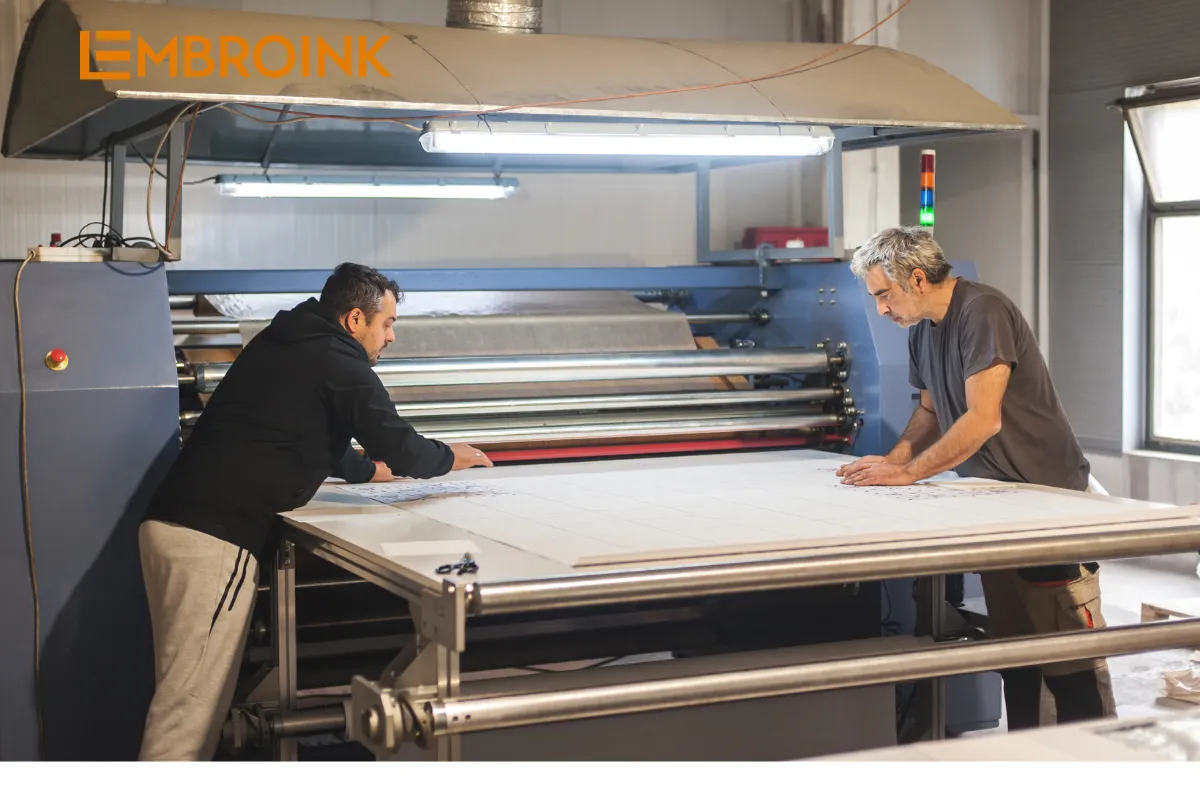
Dye sublimation, also known as all-over printing (AOP), allows for designs to be applied to the entire surface of a shirt, including seams and edges. Unlike DTG and screen printing, which apply ink to specific areas of the shirt, dye sublimation transfers ink across the entire fabric.
The dye sublimation process involves three main steps:
- Design creation: A digital image file of the t-shirt design is created.
- Printing: The design is printed in reverse onto transfer paper using a specialized printer.
- Transfer: The transfer paper is placed onto the t-shirt and heated under pressure. The heat turns the ink into a gas, which permeates the fabric and then cools down, bonding the ink to the shirt.
Dye sublimation is most effective on synthetic fabrics, such as polyester, as it integrates the ink into the fabric. However, it does not work well with cotton materials.
Pros:
- Enables all-over printing on the entire t-shirt surface.
- The ink blends into the fabric, creating a smooth and seamless appearance.
- Sublimated designs are resistant to fading and peeling.
- T-shirts produced using dye sublimation are breathable and comfortable.
Cons:
- Not suitable for cotton or dark-colored t-shirts.
- Generally more expensive compared to other t-shirt printing methods.
Direct-to-Film (DTF) printing
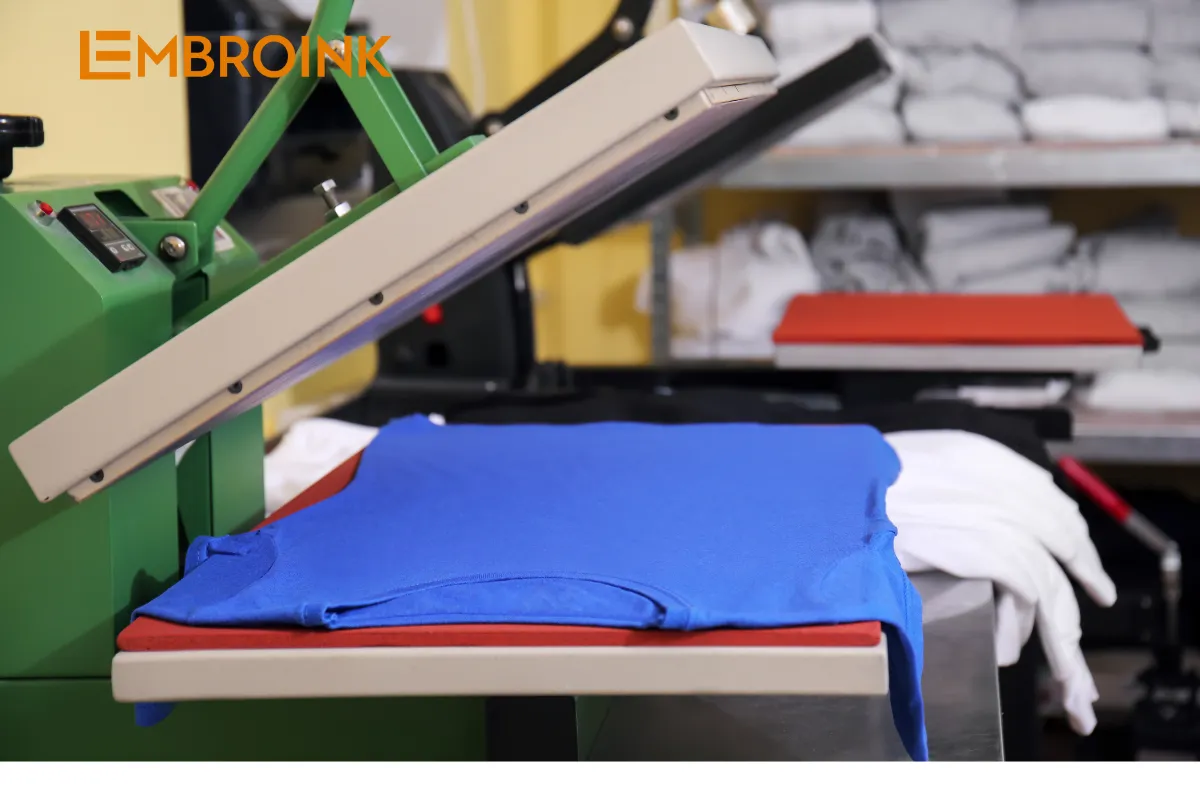
Direct-to-Film (DTF) printing is a versatile and relatively new method for transferring designs onto t-shirts and other garments. It involves printing designs onto a special film, which is then transferred to the fabric using heat and pressure. Here’s an overview of how DTF printing works and its key features:
How DTF printing works
- Design creation: The design is created digitally and printed onto a special film using a DTF printer. This film is coated with a layer of adhesive powder that will bond the ink to the fabric.
- Powder application: After printing, a layer of adhesive powder is applied to the film while the ink is still wet. The powder sticks to the ink and is then melted onto the film using a heat source.
- Transfer: The film is placed on the garment, and heat and pressure are applied using a heat press. The adhesive powder melts and bonds the ink to the fabric.
- Peeling: Once the transfer is complete and the garment has cooled, the film is carefully peeled away, leaving the design on the fabric.
Pros:
- Versatility: Can be used on a wide range of fabrics, including cotton, polyester, and blends.
- Color and detail: Allows for vibrant colors and high-resolution designs, including complex graphics and gradients.
- Durability: The prints are durable and resistant to fading, cracking, and peeling.
- Flexibility: Suitable for both small and large orders, making it ideal for print-on-demand services.
Cons:
- Initial setup cost: Requires investment in specialized equipment and materials.
- Feel and texture: The print may have a slightly different feel compared to traditional screen printing or DTG, though this is generally minimal.
- Film and powder waste: The process generates waste from the film and adhesive powder, which can be less eco-friendly compared to some other methods.
DTF printing offers a flexible and high-quality option for custom apparel, providing the ability to print detailed and colorful designs on a variety of fabrics.
Plastisol transfer printing

Plastisol transfer printing is an indirect screen printing technique that involves transferring plastic-based inks from a transfer sheet to t-shirts. It’s a variation of traditional silkscreen printing but uses heat transfer paper instead of applying ink directly to the garment.
How plastisol transfer printing works
- Design creation: Designs are created and prepared on screens in reverse, similar to screen printing.
- Transfer paper preparation: The transfer paper is processed through a conveyor dryer to remove moisture.
- Ink application: The transfer paper is placed under the screen, and ink is applied to it.
- Heat transfer: The inked transfer paper is then applied to the t-shirt using a heat press. Adhesion powder is added to the shirt to prevent blurring, and any excess powder is removed.
- Curing: The ink is heated to gel in a conveyor dryer, followed by a final heat press to ensure the design adheres properly.
- Peeling: After cooling, the transfer paper is peeled away, leaving the design on the t-shirt.
Plastisol transfer printing allows for storing gelled transfer papers, which can be used later for heat-pressing shirts as needed. This makes it useful for applications like live events where advance knowledge of the number of shirts required is beneficial.
Special effects such as textures and glosses can be achieved with plastisol transfer papers. The designs are durable and resistant to fading and cracking. However, this method is not suitable for photographic images, half-tones, or large bulk orders.
Pros:
- High-Quality: Produces sharp, vibrant designs.
- Durability: Resistant to fading and cracking.
- Special effects: Allows for unique textures and glosses.
- Flexibility: Transfer papers can be stored and used later for on-demand printing.
Cons:
- Preparation time: Requires skilled and time-consuming setup.
- Not ideal for bulk orders: Less cost-effective for large-scale productions.
Airbrushing
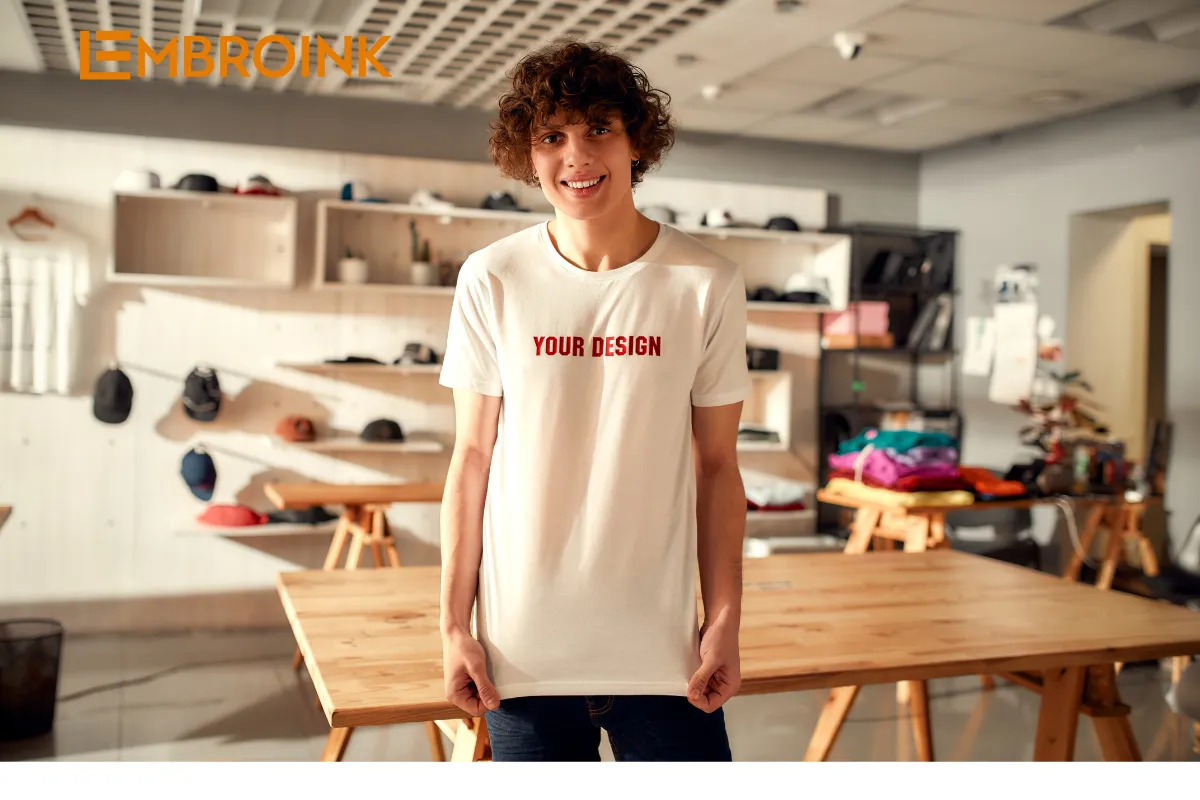
Airbrushing is a manual t-shirt painting method that uses a small spray tool to apply designs directly onto fabric. This technique involves the following steps:
- Stencil creation: A stencil, made from materials such as felt, is created and temporarily adhered to the t-shirt using a light adhesive. Multiple stencils may be used for designs with various colors.
- Paint preparation: The airbrush is loaded with paint and connected to an air source. Different paints are used for multi-colored designs.
- Application: The t-shirt is placed on a board or easel, and the airbrush applies paint to the shirt, layer by layer. Additional manual touches can be added as desired.
- Setting the paint: After the paint dries, a layer of paperback paper is applied over the design, and an iron is used to set the paint.
Airbrushing offers artistic freedom and is relatively inexpensive and easy to start. However, it has limitations in terms of design detail and durability. The process is labor-intensive and not suited for large quantities.
Pros:
- Easy to learn and do yourself: Accessible for individuals and small-scale projects.
- Inexpensive: Low-cost materials and setup.
- Creative freedom: Allows for unique and artistic designs.
Cons:
- Low-Quality designs: Less precise compared to other methods.
- Low durability: Designs may fade or wear out quickly.
- Labor-Intensive: Requires significant manual effort.
- Not suitable for bulk orders: Inefficient for large-scale production.
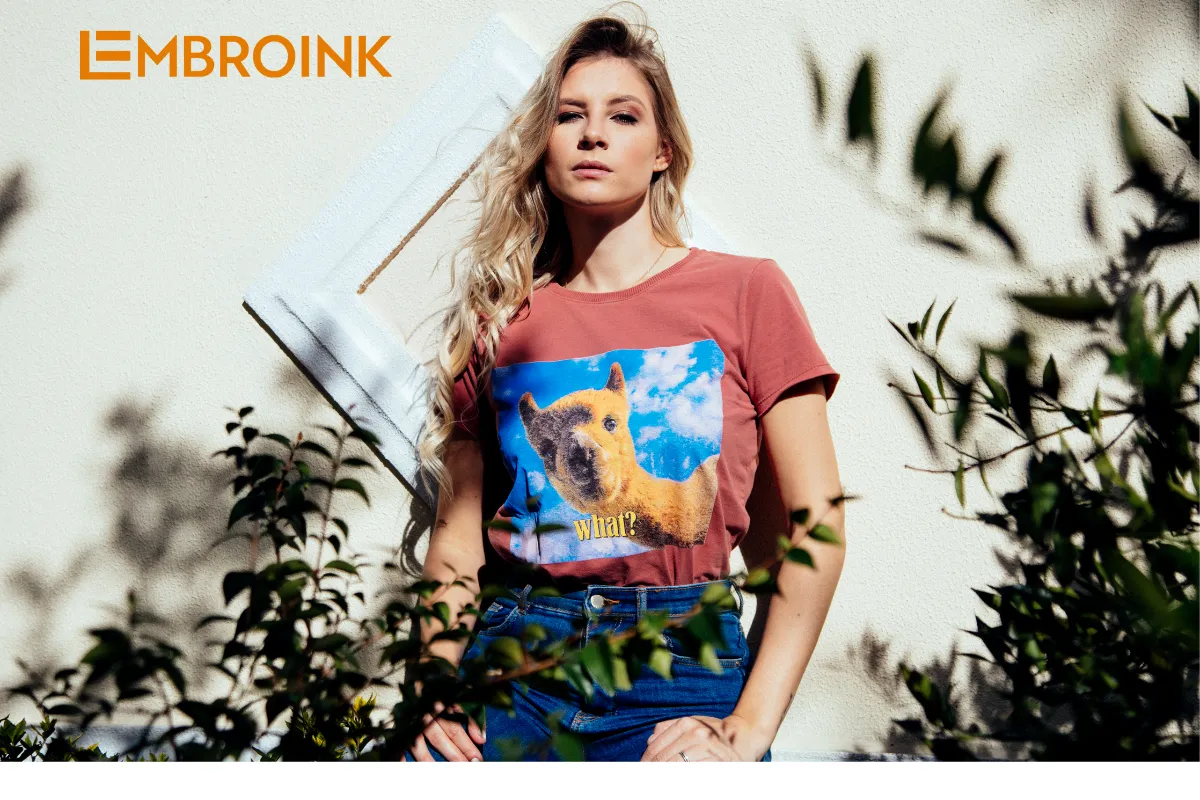
Which T-Shirt printing method should you choose?
When selecting a t-shirt printing method for your business, consider factors such as design complexity, fabric type, order volume, and budget. Here’s a guide to help you choose the most suitable method:
- Direct-to-Garment (DTG) Printing: Ideal for intricate and colorful designs on cotton fabrics. DTG offers high-resolution prints but can be costlier for large quantities.
- Screen Printing: Best for vibrant, long-lasting prints on larger batches. It’s cost-effective for bulk orders, making it a popular choice for high-volume production.
- Dye Sublimation: Perfect for all-over prints on polyester fabrics. This method provides vivid, durable results but is limited to synthetic fabrics.
- Direct-to-Film (DTF) Printing: Versatile across various fabrics, DTF produces bright, detailed prints and is suitable for both small and large orders.
- Plastisol Transfers: Excellent for high-quality prints on diverse materials, with options for glossy or textured finishes. Suitable for medium to large orders.
- Vinyl Printing: Great for text-based designs like sports jerseys. It offers durability and flexibility in design placement but is best for simpler graphics.
- Embroidery: Adds sophistication and durability to designs, though it’s less suited for complex or highly detailed images. Ideal for premium or professional apparel.
- Airbrushing: Provides creative, hand-crafted designs for unique, small-scale projects. It’s perfect for custom, one-of-a-kind items but not practical for large orders.
Choose the method that best fits your t-shirt business’s needs, whether you prioritize design detail, fabric compatibility, production volume, or cost. Each printing method has its own advantages, so your choice will impact your brand’s product quality and style in the t-shirt printing industry.

